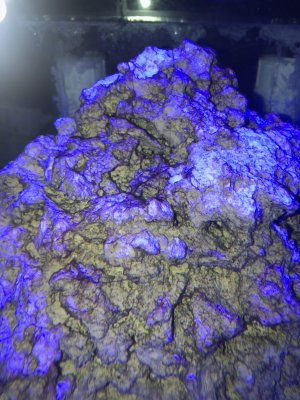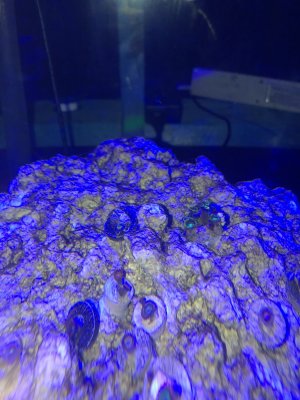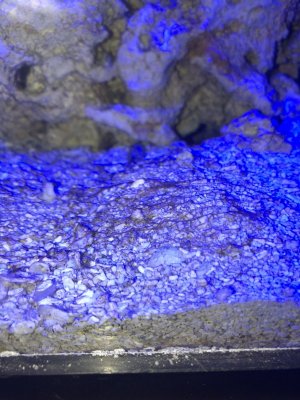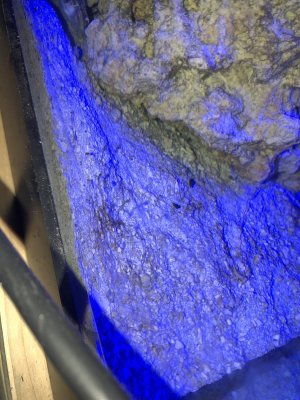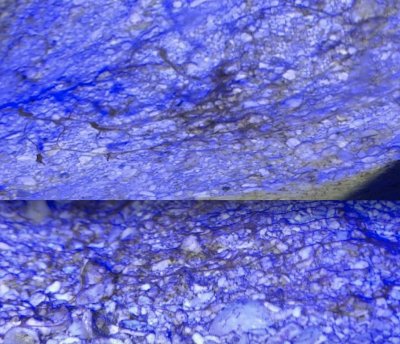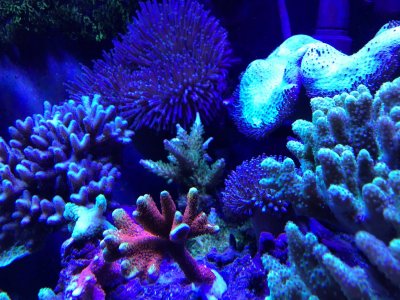Hey guys,
I have Cyanobacteria, pretty positive, as it consistently creates mats of algae on my sand bed, rock, and corals. It’s more of a clinging issue to my zoas, urchin, and rocks. It appears red and won’t stop coming back.
I have tested my parameters to 0 nitrates, ammonia, phosphates, nitrites. Stable alkanlinity, Ca, and salinity. I have protein skimmer running along with GFO AND activated carbon. I have a “refugium” with some chaeto that I haven’t seen grow along with a kessil flora. This is a 125 gal. Setup, three AI Prime HD lights so it’s not lighting and 6k+ gph flow so whatever is feeding it is in high quantity. I have probably 10 wrasse, a pair of clowns, a blue tang, a dragon goby, a fire fish, a long spine urchin, loads and LOADS of CUC over 200+ snails from turbos to dwarf ceriths. Some crabs here and there as well.
here is where I am having trouble...
I have started with chemiclean having wiped it out but have had it return within days of successful treatment. I have done the three day blackout as well which cured it for 2-3 days but it’s back today already... phosphates and nitrates and ammonia all 0, running carbon, GFO, refugium, RO/DI water in a non leaching container. I recently took out ALL of the rock and scrubbed them clean with peroxide, toothbrushes and a pair of friends along with a 50% water change and a completely cleaned sand bed. I am also doing kalkwasser which seems to have stabilized my alk,Ca, and pH, along with slowed bacteria growth but I am not able to continue shutting my lights out for days on end as well as dose chemiclean as there are higher end corals in there. I also have dosed plenty of MB7 which also hasn’t helped as much as I thought it would. Nutrients are seemingly controlled, flow & lights are fine, everything else is stable and I have no idea what is feeding it.
only things I haven’t tried:
I haven’t dosed nitrates (unlikely but plausible) or tested for silicates as my RO/DI unit is a fountainhead water system unit 5 stage from the water hose outside the house which could be a problem since it has no TDS meter and the problem is consistent. I am looking at getting a BRS unit (reliable) in a couple weeks and some copepods for overall benefit. Possible nitrate dosing through phyto in process of feeding copepods
can’t identify the problem
Temporary solutions working, no permanent solution... HELP!!!
Tank before, and during blackout.
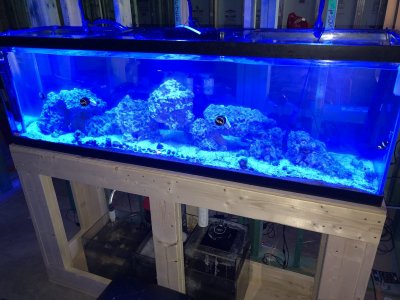
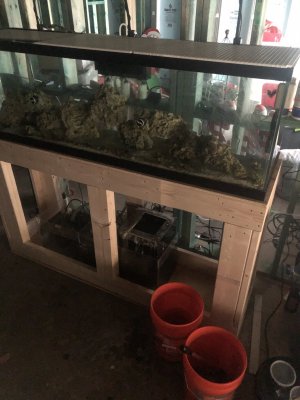
I have Cyanobacteria, pretty positive, as it consistently creates mats of algae on my sand bed, rock, and corals. It’s more of a clinging issue to my zoas, urchin, and rocks. It appears red and won’t stop coming back.
I have tested my parameters to 0 nitrates, ammonia, phosphates, nitrites. Stable alkanlinity, Ca, and salinity. I have protein skimmer running along with GFO AND activated carbon. I have a “refugium” with some chaeto that I haven’t seen grow along with a kessil flora. This is a 125 gal. Setup, three AI Prime HD lights so it’s not lighting and 6k+ gph flow so whatever is feeding it is in high quantity. I have probably 10 wrasse, a pair of clowns, a blue tang, a dragon goby, a fire fish, a long spine urchin, loads and LOADS of CUC over 200+ snails from turbos to dwarf ceriths. Some crabs here and there as well.
here is where I am having trouble...
I have started with chemiclean having wiped it out but have had it return within days of successful treatment. I have done the three day blackout as well which cured it for 2-3 days but it’s back today already... phosphates and nitrates and ammonia all 0, running carbon, GFO, refugium, RO/DI water in a non leaching container. I recently took out ALL of the rock and scrubbed them clean with peroxide, toothbrushes and a pair of friends along with a 50% water change and a completely cleaned sand bed. I am also doing kalkwasser which seems to have stabilized my alk,Ca, and pH, along with slowed bacteria growth but I am not able to continue shutting my lights out for days on end as well as dose chemiclean as there are higher end corals in there. I also have dosed plenty of MB7 which also hasn’t helped as much as I thought it would. Nutrients are seemingly controlled, flow & lights are fine, everything else is stable and I have no idea what is feeding it.
only things I haven’t tried:
I haven’t dosed nitrates (unlikely but plausible) or tested for silicates as my RO/DI unit is a fountainhead water system unit 5 stage from the water hose outside the house which could be a problem since it has no TDS meter and the problem is consistent. I am looking at getting a BRS unit (reliable) in a couple weeks and some copepods for overall benefit. Possible nitrate dosing through phyto in process of feeding copepods
can’t identify the problem
Temporary solutions working, no permanent solution... HELP!!!
Tank before, and during blackout.








